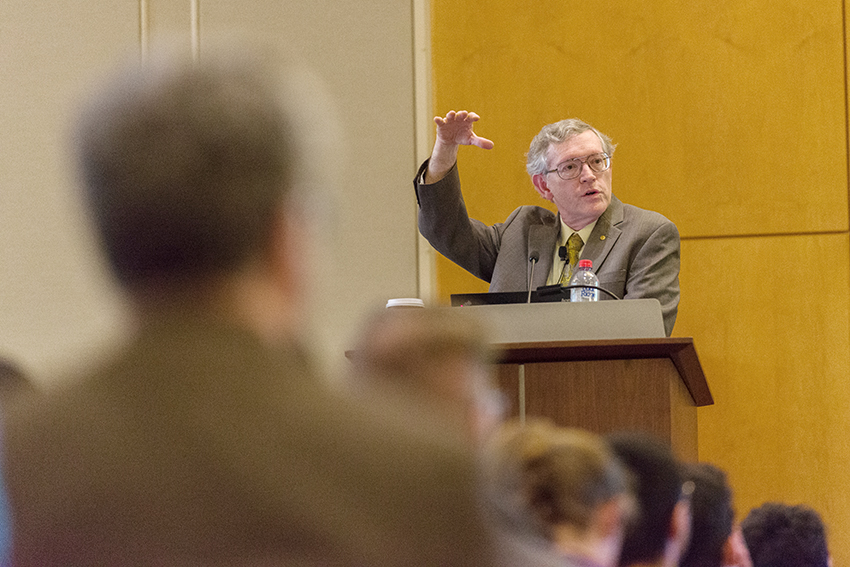The work of Nobel Prize-winning chemist W.E. Moerner unlocked the secrets of how living cells work.
Moerner spoke Monday about his breakthrough as a part of the Gottlieb Lecture Series hosted by the College of Natural Science. Moerner’s research group created a new microscopy method to see individual molecules, such as those in living cells, by binding them to fluorescent proteins. His technique is different from standard microscopy, which has a limit on the image quality of small, neighboring objects. Scientists can use Moerner’s method to see the structure of living cells and how certain molecules are carried through these cells.
“This means that it’s possible to look inside cell biology on the scale of one object at a time,” Moerner said. “In general, we have all kinds of machines moving around inside ourselves, all doing their different jobs, whether they’re enzymes or motors or DNA.”
Scientists can use Moerner’s method to light up molecules to see the structures within the cell. By switching different molecules on and off, they can image the entire structure.
Moerner explained his technique through a life-size analogy, with the molecular structures as a tree in the dark and individual molecules as fireflies on the branches.
“You put fireflies all along the branches of the tree, and you just watch what happens,” he said. “Fireflies are going to blink on and off, and every time you see one, you localize their position and write them down. Put that all together, and now you’ve got the picture of the tree.”
Moerner ended his lecture by encouraging students in the audience to lift the veil of nature with science.
“We’re asking how things work,” he said. “I hope that people continue to have this fire of wanting to understand how things work. There are neat things to see, and, in general, science is fun.”















